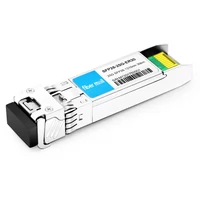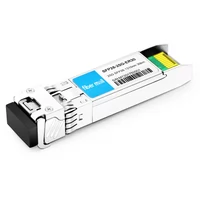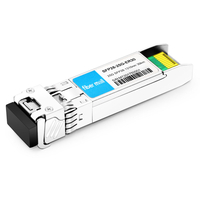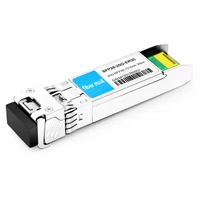FiberMall SFP28 ER30 Optical Transceiver
The 25G optical module is an optical module with a transmission rate of 25Gbps, mainly used in 25G Ethernet and 100G (4×25Gbps) Ethernet. Packaged as SFP28, its function is for interconnecting servers and switches in data centers. 25G optical modules can provide the most energy-efficient way to meet the growing needs of data center networks. 25G optical modules can compensate for the high price and power consumption of 40G optical modules and 100G optical modules, as well as the low rate of 10G optical modules.
In the 5G era, 25G SFP28 optical modules are widely used in the construction of 5G Fronthaul base stations due to their optimal input/output (I/O) performance and fiber capacity, which is 2.5 times higher than that of 10G Ethernet.
The SFP28 ER30 transceivers are high-performance, cost-effective modules supporting a data rate of 25.78Gbps and a 30km transmission distance with SMF. The biggest difference between SFP28 ER and SFP28 ER30 is that the former one with a 40km transmission distance while the latter one with a 30km transmission. The transceiver consists of three sections: a DML laser transmitter, an APD photodiode integrated with a trans-impedance preamplifier (TIA), and an MCU control unit. All modules satisfy class I laser safety requirements. The transceivers are compatible with SFP Multi-Source Agreement and SFF-8472 digital diagnostics functions.
Table of Contents
ToggleRelated Products:
-
 SFP28-25G-ER30 25G SFP28 ER Lite 1310nm 30km LC SMF DDM Transceiver Module
$165.00
SFP28-25G-ER30 25G SFP28 ER Lite 1310nm 30km LC SMF DDM Transceiver Module
$165.00
-
 Cisco SFP-25G-iER-S Compatible 25G SFP28 ER Lite 1310nm 30km LC SMF DDM Transceiver Module
$165.00
Cisco SFP-25G-iER-S Compatible 25G SFP28 ER Lite 1310nm 30km LC SMF DDM Transceiver Module
$165.00
-
 Arista Networks SFP-25G-ER-Lite Compatible 25G SFP28 ER Lite 1310nm 30km LC SMF DDM Transceiver Module
$165.00
Arista Networks SFP-25G-ER-Lite Compatible 25G SFP28 ER Lite 1310nm 30km LC SMF DDM Transceiver Module
$165.00
-
 Brocade 25G-SFP28-ER-Lite Compatible 25G SFP28 ER Lite 1310nm 30km LC SMF DDM Transceiver Module
$165.00
Brocade 25G-SFP28-ER-Lite Compatible 25G SFP28 ER Lite 1310nm 30km LC SMF DDM Transceiver Module
$165.00




